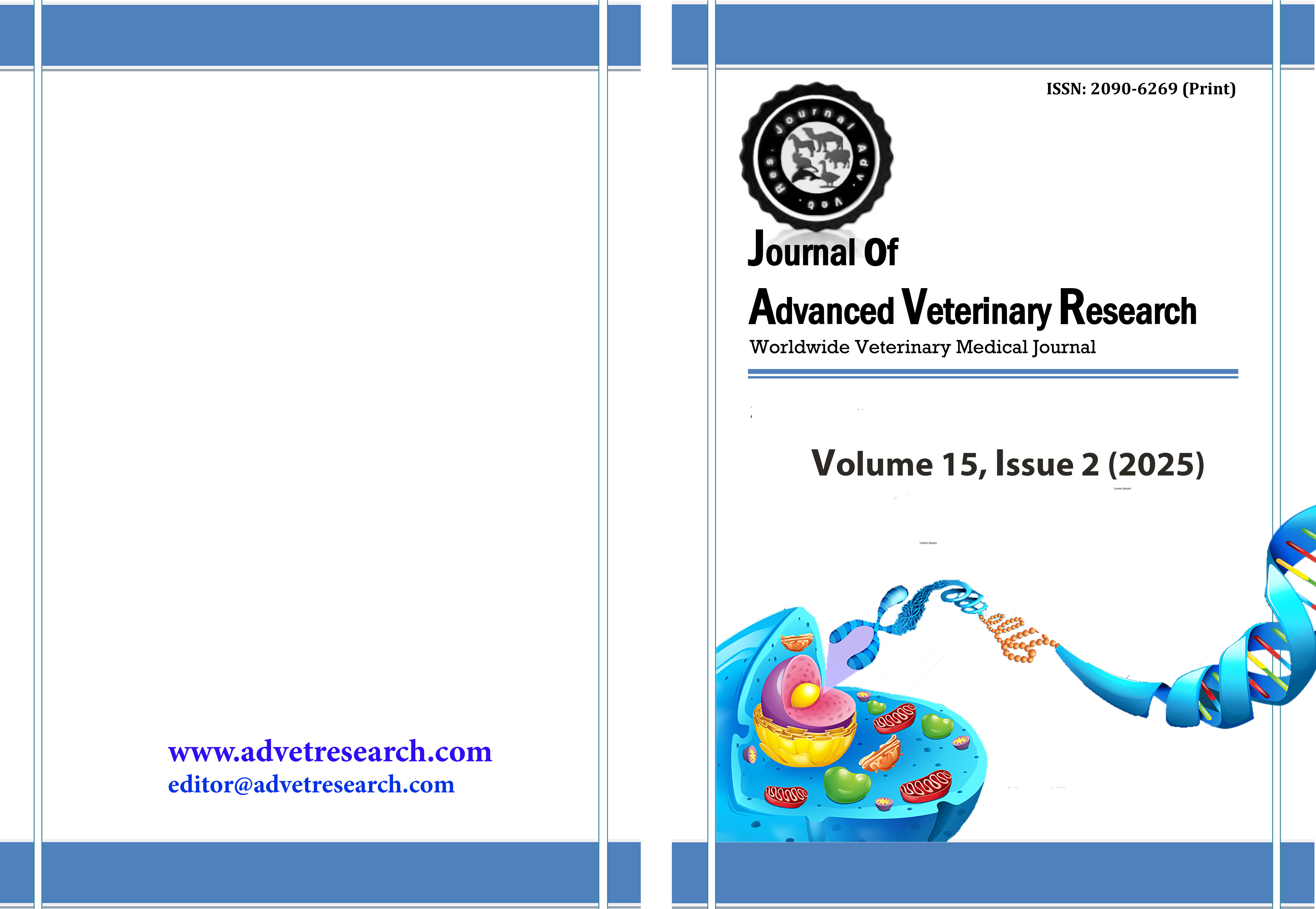Controlled internal drug release (CIDR) is superior to improve the conception rate in adult cows and heifers with metestrus bleeding
Keywords:
Fertility, Metestrual bleeding, Post-estrual bleeding, Repeat breeding, MetrorrhagiaAbstract
Efficient reproductive performance is crucial to maintain high cattle production including dairy and beef production. Cows with metestrual bleeding about 2 days after the end of estrus show lower chance to conceive. The current study aimed to compare the efficacy of double insemination and different hormonal treatments to improve conception rate in animals with metestrual bleeding. In the present study, a total number of 128 cows were used including 89 heifer and 39 pluriparours cows. The used animals were divided into 5 groups; control group (Ctrl; n=15) received no treatment, double insemination group (n=15), prostaglandin (PGF2α)-treated group (n=30), gonadotropin releasing hormone (GnRH)-treated group (n=28), and controlled internal drug release (CIDR; n=40). Ultrasonography to examine the reproductive organs and blood sampling at day 0, 3, 6, 18 were performed and serum samples were stored for estradiol (E2) and progesterone (P4) hormonal assay. Our results showed that, PGF2α, GnRH, and CIDR would be clinically effective in compare to ctrl or double insemination group to improve the conception rate in cows and heifers with metestrual bleeding. CIDR protocol showed superior efficacy with a conception rate of 87.5 % in compare to ctrl (13.3%) or double insemination (33.3%). CIDR treated group showed higher concentrations of both E2 and P4 levels in the treated cows and heifers at day 6 and day 18. While no differences were reported in the measurements of the ovarian cyclic structures between all groups. In conclusion, CIDR protocol for 7 days with PGF2α at day 6 and GnRH after CIDR removal by 48 hours would be the treatment protocol of choice to improve conception rate in cows and heifers with metestrual bleeding.
Downloads
Published
How to Cite
Issue
Section
License
Copyright (c) 2025 Journal of Advanced Veterinary Research

This work is licensed under a Creative Commons Attribution-NonCommercial-NoDerivatives 4.0 International License.
Users have the right to read, download, copy, distribute, print, search, or link to the full texts of articles under the following conditions: Creative Commons Attribution-NonCommercial-NoDerivatives 4.0 International (CC BY-NC-ND 4.0).
Attribution-NonCommercial-NoDerivs
CC BY-NC-ND
This work is licensed under a Creative Commons Attribution-NonCommercial-NoDerivatives 4.0 International (CC BY-NC-ND 4.0) license




